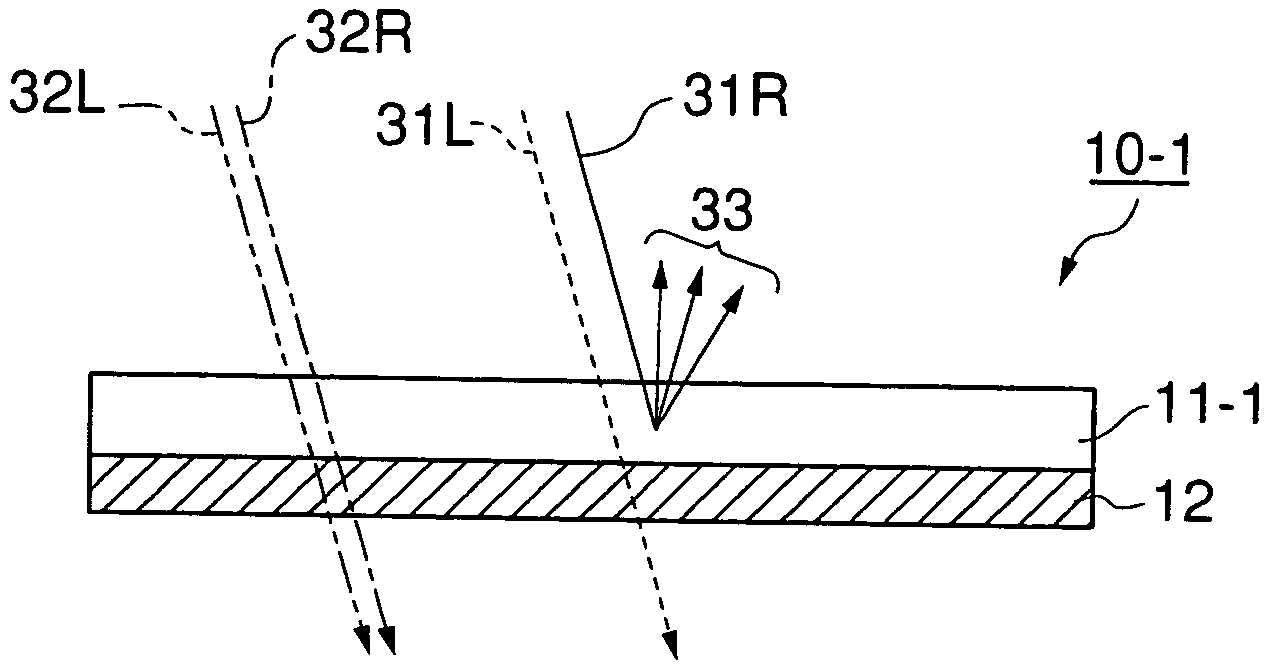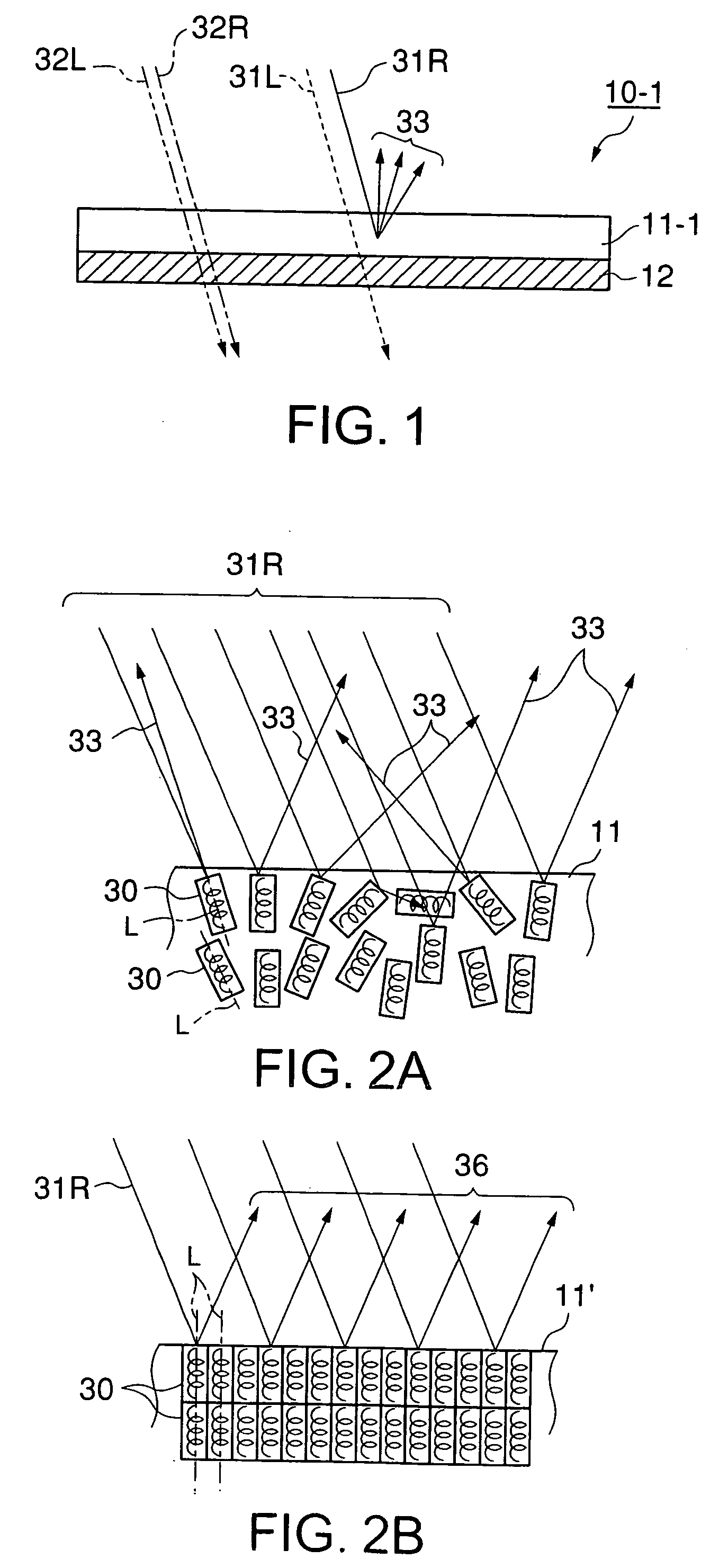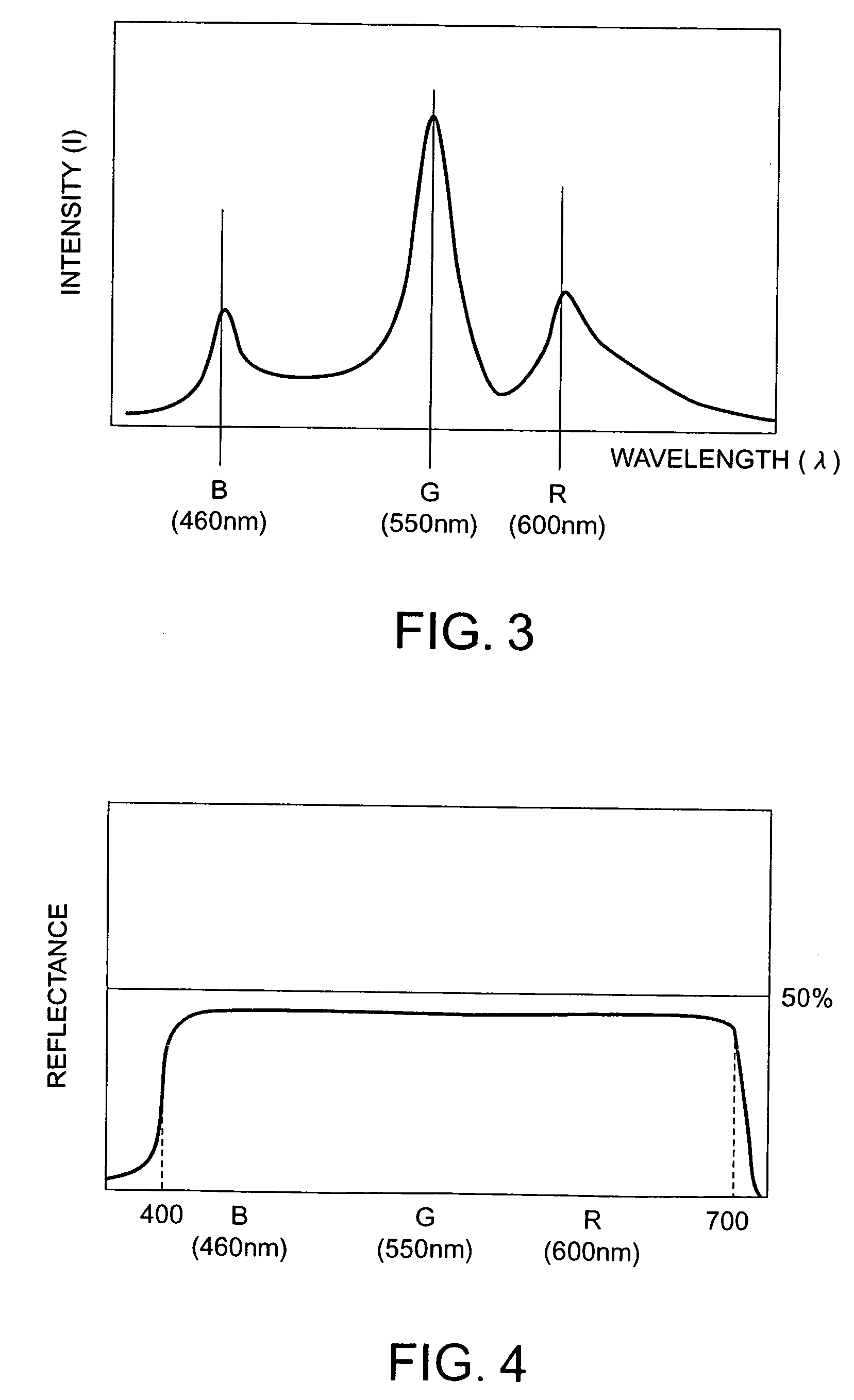Projection screen and projection system comprising the same
- Summary
- Abstract
- Description
- Claims
- Application Information
AI Technical Summary
Benefits of technology
Problems solved by technology
Method used
Image
Examples
examples
A specific example of the above-described embodiments will now be given below.
example)
(Example)
A first cholesteric liquid crystal solution having a selective reflection wave range with a center wavelength of 670 nm was prepared by dissolving, in cyclohexanone, a monomer-containing liquid crystal consisting of a main component that was an ultraviolet-curing, nematic liquid crystal (94.7% by weight) and a polymerizable chiral agent (5.3% by weight). A liquid crystal containing a compound represented by the above chemical formula (2-xi) was used as the nematic liquid crystal. A compound represented by the above chemical formula (5) was used as the polymerizable chiral agent. To the first cholesteric liquid crystal solution was added 5% by weight of a photopolymerization initiator available from Ciba Specialty Chemicals K.K., Japan.
By a bar coating method, the above-prepared first cholesteric liquid crystal solution was applied to a substrate, a 1200 mm×900 mm black-colored PET film coated with an adherent layer (Lumirror / AC-X manufactured by Panack Co., Ltd., Japan)....
PUM
 Login to View More
Login to View More Abstract
Description
Claims
Application Information
 Login to View More
Login to View More - R&D
- Intellectual Property
- Life Sciences
- Materials
- Tech Scout
- Unparalleled Data Quality
- Higher Quality Content
- 60% Fewer Hallucinations
Browse by: Latest US Patents, China's latest patents, Technical Efficacy Thesaurus, Application Domain, Technology Topic, Popular Technical Reports.
© 2025 PatSnap. All rights reserved.Legal|Privacy policy|Modern Slavery Act Transparency Statement|Sitemap|About US| Contact US: help@patsnap.com



